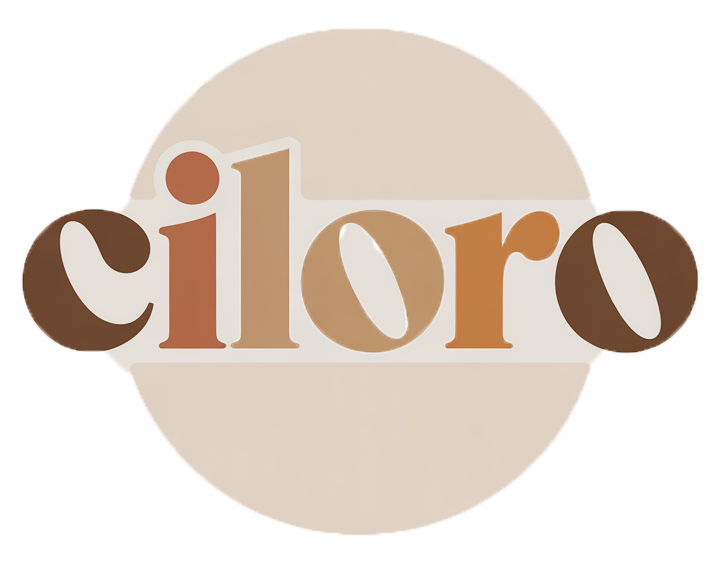Budget-Friendly Minimalist Home Decor Ideas for Serenity
Minimalist home decor is defined by its simplicity, functionality, and intentionality.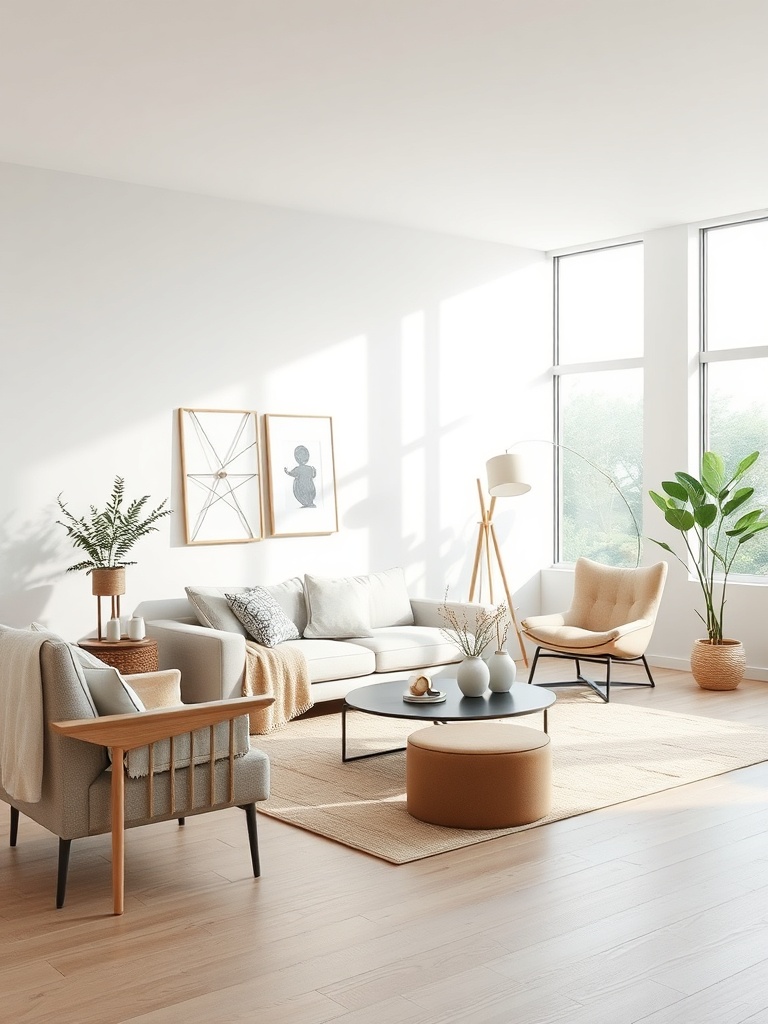
It focuses on the essentials, stripping away unnecessary items to create a serene and clutter-free environment. In today's fast-paced world, adopting a minimalist approach can not only enhance the aesthetic of your home but also contribute to a more peaceful and organized life. However, many individuals hesitate to embrace this style due to concerns about cost. This article aims to provide budget-friendly strategies for creating stunning minimalist spaces without compromising on quality or style.
Throughout this piece, readers will learn about the principles of minimalism, effective budgeting techniques, color palette selection, furniture choices, and DIY decor ideas. By the end, you will be equipped with the knowledge to transform your home into a minimalist haven that reflects your personal style and values.
Understanding Minimalism in Home Decor
What is Minimalism?
Minimalism is a design philosophy that emphasizes simplicity and the elimination of excess. It involves carefully selecting and arranging items in a way that highlights their beauty and functionality. The benefits of a minimalist approach include reduced stress, increased focus, and a more organized living space. By surrounding ourselves with fewer possessions, we can cultivate a sense of calm and clarity.
The Philosophy of Less is More
The concept of "less is more" is central to minimalism. This philosophy encourages individuals to prioritize simplicity and functionality in their decor choices. By focusing on essential items, we can create spaces that are not only visually appealing but also conducive to mental well-being. Minimalism allows for greater appreciation of the items we choose to keep, fostering a sense of gratitude and contentment.
Budgeting for Your Decor
Setting a Realistic Budget
Before diving into your decor project, it is crucial to set a realistic budget. Start by assessing your financial situation and determining how much you can comfortably allocate to your home decor. Consider the following tips:
- List all areas you want to decorate and estimate costs for each.
- Prioritize your purchases by focusing on essential items first.
- Factor in potential DIY projects that can save money.
Tracking Expenses
Once you have established a budget, tracking your expenses is vital to stay on course. There are several methods to effectively track your spending:
- Use budgeting apps such as Mint or YNAB (You Need A Budget).
- Create a simple spreadsheet to log purchases and expenses.
- Keep receipts and categorize expenses to identify spending patterns.
Choosing a Color Palette
The Power of Neutrals
Neutral colors are a cornerstone of minimalist decor.
They provide a calming backdrop that allows other elements in the room to shine. Some benefits of using neutral colors include:
- Timeless appeal that never goes out of style.
- Versatility in pairing with various accent colors.
- Ability to make spaces feel larger and more open.
Effective neutral palettes might include shades of white, beige, gray, and taupe, which can be combined to create depth and interest.
Adding Accents
Incorporating accent colors can add personality to your minimalist space without overwhelming it. Consider these popular accent colors:
- Soft pastels for a gentle touch.
- Bold jewel tones for a pop of color.
- Earthy tones to connect with nature.
When adding accent colors, ensure they complement your neutral base and maintain the overall simplicity of the design.
Furniture Selection for Minimalist Design
Investing in Multi-Functional Furniture
Multi-functional furniture is a smart investment for minimalist decor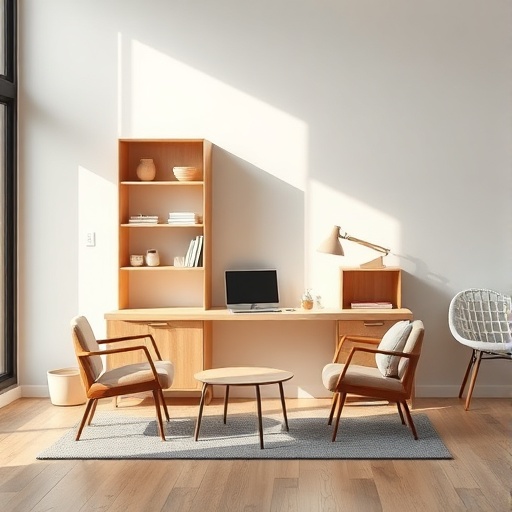
, as it maximizes space and utility. Examples of such furniture include:
- Sofa beds that serve as both seating and sleeping areas.
- Ottomans with storage capabilities.
- Expandable dining tables for flexible use.
By choosing space-saving designs, you can achieve a clean and uncluttered look.
Choosing Quality Over Quantity
When selecting furniture, it is essential to prioritize quality over quantity. Look for durable materials that can withstand wear and tear. Here are some tips to identify quality furniture on a budget:
- Research brands known for their craftsmanship.
- Check reviews and ratings from previous customers.
- Visit thrift stores or consignment shops for high-quality used items.
Decluttering Your Space
The Art of Letting Go
Decluttering is a fundamental step in achieving a minimalist home.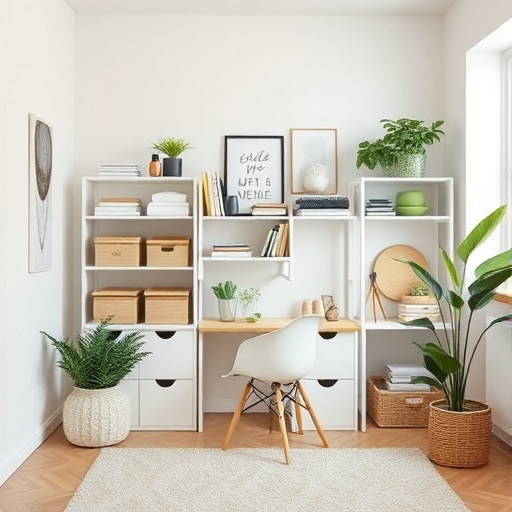
Here are some tips for deciding what to keep or discard:
- Evaluate each item based on its usefulness and emotional value.
- Set a timer for decluttering sessions to stay focused.
- Use the "one in, one out" rule to maintain balance.
The first step in decluttering is to let go of the idea that you need to keep everything.
Letting go of excess can lead to emotional benefits such as reduced anxiety and improved focus.
Organizing for Minimalism
Effective organization is key to maintaining a minimalist space. Consider these strategies:
- Use clear storage bins to keep items visible and accessible.
- Label containers for easy identification.
- Implement a daily tidying routine to prevent clutter buildup.
Tools like shelving units and drawer organizers can also enhance your organizational efforts.
DIY Decor Ideas
Upcycling and Repurposing
Upcycling is an excellent way to transform old items into new decor while saving money. Here are some ideas:
- Turn glass jars into stylish vases or candle holders.
- Repurpose wooden pallets into coffee tables or wall art.
- Transform old picture frames into unique wall displays.
These projects not only save money but also add a personal touch to your decor.
Simple Craft Projects
Engaging in simple craft projects can enhance your minimalist decor. Here are a few easy DIY ideas:
- Create a gallery wall with a collection of black-and-white photos.
- Make your own wall hangings using natural materials like twine and wood.
- Design minimalist planters using terracotta pots and paint.
Materials for these projects are often inexpensive and can be found at local craft stores.
Incorporating Natural Elements
Bringing the Outdoors In
Integrating plants into your decor can enhance the minimalist aesthetic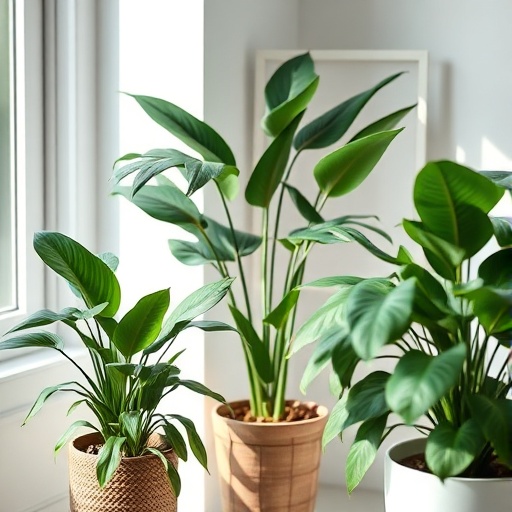
while improving air quality. Some benefits of plants include:
- Adding a touch of color and life to your space.
- Creating a calming atmosphere.
- Low-maintenance options such as succulents and snake plants.
Consider placing plants in simple pots that align with your minimalist style.
Using Natural Materials
Natural materials like wood, stone, and metal can elevate your decor while remaining budget-friendly. Here’s how to source affordable options:
- Visit local markets for reclaimed wood or stone.
- Explore online marketplaces for sustainable materials.
- Consider DIY projects using natural elements.
Lighting in Minimalist Decor
Choosing the Right Lighting Fixtures
Lighting plays a crucial role in minimalist decor.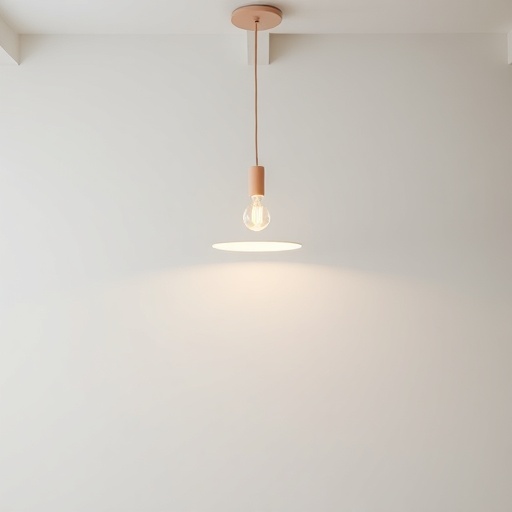
Opt for fixtures that enhance the simplicity of your space. Consider these tips:
- Choose pendant lights with clean lines.
- Incorporate floor lamps that provide both style and function.
- Look for budget-friendly options at thrift stores or online marketplaces.
The Role of Natural Light
Maximizing natural light can significantly enhance your home’s ambiance. Here are some techniques to increase natural light:
- Use sheer window treatments that allow light to filter through.
- Position mirrors strategically to reflect light.
- Keep windows clean to ensure maximum brightness.
Art and Accessories
Selecting Minimalist Artwork
When choosing artwork for a minimalist space
, look for pieces that resonate with you and adhere to the principles of simplicity. Consider these criteria:
- Choose artwork with a limited color palette.
- Look for pieces that evoke emotion or thought.
- Explore affordable sources like local artists or online shops.
Limit Accessory Use
In minimalist decor, less is often more when it comes to accessories. Here are some tips for selecting and displaying accessories effectively:
- Choose a few impactful pieces rather than cluttering surfaces.
- Group accessories in odd numbers for visual interest.
- Regularly assess your accessories to ensure they align with your minimalist vision.
Creating Cohesion in Your Space
Maintaining a Consistent Theme
To achieve a unified look, ensure all elements of your decor complement each other. Consider the following strategies:
- Stick to a consistent color palette throughout your home.
- Choose furniture styles that share common design elements.
- Incorporate similar textures to create visual harmony.
Regularly Reassessing Your Space
Periodically reviewing your decor choices is essential for maintaining a minimalist space. Here are some tips for refreshing your home:
- Schedule regular decluttering sessions to eliminate excess.
- Rotate accessories to keep the space feeling new.
- Stay open to changing decor elements that no longer serve you.
Real-Life Examples and Inspiration
Case Studies of Budget-Friendly Minimalist Decor
Examining real-life examples can provide inspiration for your own projects. Here are a few successful budget-friendly minimalist decor projects:
| Project | Description | Budget |
|---|---|---|
| Cozy Living Room | Transformed with neutral colors and multi-functional furniture. | $500 |
| Serene Bedroom | Incorporated plants and natural materials for a calming effect. | $400 |
| Stylish Home Office | Used DIY decor and minimal accessories for a focused workspace. | $300 |
Each project highlights the effectiveness of budget-conscious choices while achieving a minimalist aesthetic.
Online Resources for Inspiration
There are numerous platforms and communities dedicated to minimalist decor that can provide inspiration. Some popular resources include:
- Pinterest for visual ideas and DIY projects.
- Instagram accounts focused on minimalist design.
- Online forums where enthusiasts share tips and experiences.
Conclusion
In summary, creating stunning minimalist home decor on a budget is entirely achievable with careful planning and creativity. By understanding the principles of minimalism, budgeting effectively, and making thoughtful choices in color, furniture, and decor, you can transform your space into a tranquil retreat. Embrace the minimalist lifestyle, and enjoy the positive impact it can have on your well-being and daily life.
Recap
- Minimalism emphasizes simplicity and functionality.
- Budgeting is key to achieving your decor goals.
- Neutral colors and multi-functional furniture enhance minimalist design.
- Regular decluttering and organization maintain a serene space.
Key Takeaways
- Minimalism can enhance mental well-being.
- Set a realistic budget and track expenses for decor.
- Utilize neutral colors and multi-functional furniture wisely.
- Incorporate natural elements for a fresh ambiance.
FAQ
What is the main principle of minimalist decor?
The main principle of minimalist decor is to focus on simplicity by eliminating excess and emphasizing functionality.
How can I decorate my home on a tight budget?
To decorate on a tight budget, consider DIY projects, thrift shopping for furniture, and prioritizing affordable materials.
What colors work best in minimalist decor?
Neutral colors, such as whites, grays, and beiges, work best in minimalist decor, providing a calming backdrop for accent colors.
How do I maintain a minimalist space?
Maintain a minimalist space by regularly decluttering, organizing items, and reassessing decor choices to ensure they align with your vision.
What are some easy DIY projects for minimalist decor?
Easy DIY projects include creating a gallery wall, upcycling furniture, and making simple planters from natural materials.
